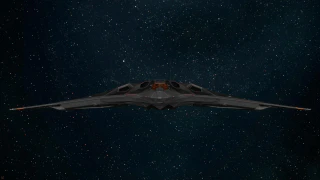Ship emissions are the combination of electromagnetic (EM), infrared (IR) and cross section (CS) profiles of a given ship.

- Infrared Signature – Powered components on a ship generate heat. Most of this heat is collected by the cooling system (depending on efficiency) and ejected from the craft via heat exchangers. This ejected heat, coupled with any uncooled heat from thrusters and other components, can be detected by infrared cameras. Players will be able to use standard heat seeking missiles and other infrared tracking devices to locate and track objects by their heat output.[1]
- Electromagnetic Signature – Anything that is consuming power will generate an EM signature, though, in normal circumstances, the primary contributors will be the ship's energy weapons, shield generator and power plants. Power management will be critical adjusting a ship's EM signature. For example, captains may choose to lower their signature with less protective shields or be better shielded but highly visible. EM signature is specifically used by certain missile tracking systems and advanced EMF Detectors. Active radar it's a major electromagnetic emissor.[1]
- Cross-Section – A ship's cross-section can be detected by radar sweeps just like radar systems of the 20th century. This means that the larger the ship and the more obtuse the shape, the more readily it will be detected by standard sensors. But for pilots with larger ships, all is not lost as hull materials can be used to minimize visibility. Certain exterior modifications such as specialized armors can absorb and scatter radar signals, though they may result in a loss of overall armor protection or maneuverability.[1]
All those elements combined give the overall stealth or lack off of a given ship. The emissions of a ship can lowered in two ways:
- Lowering the power of components and turning off systems.
- Using low emission ship components.
"Thrusters to zero. Running lights down. Active scanners disabled. My Hornet Tracker hung amidst the asteroid field, looking to all the world like a lifeless derelict or another hunk of rock. In front of me, the lumbering Hull D came into view as I followed it with the only sensor I still had online, my Mark One Eyeball. I grinned as I fingered the switch that would bring the fighter back to life the moment my prey was in range. One good hit with a data spike missile and this could all be over…"
[2]
See also
References
- ↑ Jump up to: 1.0 1.1 1.2 Design Notes: Electronic Warfare. Transmission - Comm-Link. Retrieved 2015-08-29
- ↑ Design Notes: Electronic Warfare. Transmission - Comm-Link. Retrieved 2021-02-09